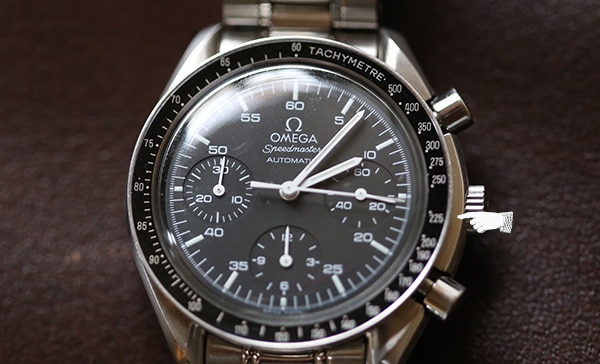
You start the chronograph when a car passes the start/finish line and stop it when it completes an entire lap. It took the car 16 seconds to complete a lap on the quarter-mile track. 16 seconds lines up with 225 on the tachymeter scale. There’s no way that car was going 225 miles per hour; to get the correct average speed, you need to remember that the track was only one-quarter of a mile. So we need ¼ of 225, which is 56.25. The car was averaging a speed of about 56 mph.
What do you do if you measure something that takes more than 60 seconds? Remember, the way the tachymeter scale is set up, it’s only good for measuring elapsed times up to a minute.
But, with a bit of math, you can still use a tachymeter to measure average speed for things that take longer than that. Let’s say you’re watching a 1-mile horse race, and you want to know how fast the winning horse was averaging. He completed the mile in 1 minute 34 seconds, or 94 seconds.
94 seconds is too long to get a speed with our tachymeter. But let’s judge his speed on half a mile. We can estimate that it took the horse 47 seconds to complete half a mile (94 seconds divided by 2 = 47 seconds). 47 seconds is within the range of the tachymeter and it lines up with the 75 hash mark. To get the average speed per hour for the full mile, we need to divide that 75 by 2, giving us an average speed of 37.5 mph.
Besides the speed of objects like cars, people, or race horses, you can even use a tachymeter to figure out how much time it takes to produce “x” amount of widgets in an hour. For example, if you want to know how many watches a watch company can make an hour, simply time how long it takes to make a watch from start to finish with your chronograph. Thanks to automation, it takes only 55 seconds. Looking at the tachymeter scale, 55 seconds lines up with 65. So a watch company can make about 65 watches in an hour.
Cool, huh?
...[ Continue to next page ]
Share This Post














